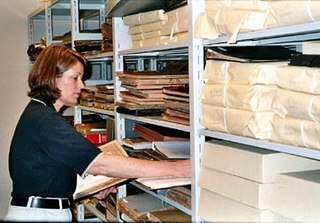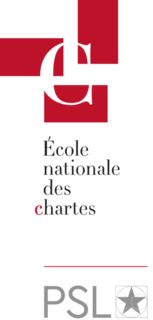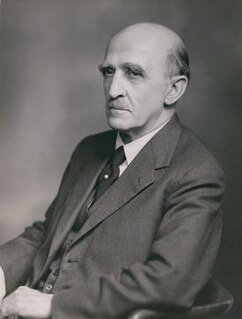 W
WAnglo-American Cataloguing Rules (AACR) were an international library cataloging standard. First published in 1967 and edited by C. Sumner Spalding, a second edition (AACR2) edited by Michael Gorman and Paul W. Winkler was issued in 1978, with subsequent revisions (AACR2R) appearing in 1988 and 1998; all updates ceased in 2005.
 W
WIn libraries, art galleries, museums and archives, an accession number is a unique identifier assigned to, and achieving initial control of, each acquisition. Assignment of accession numbers typically occurs at the point of accessioning or cataloging. The term is something of a misnomer, because the form accession numbers take is often alpha-numeric.
 W
WAn aperture card is a type of punched card with a cut-out window into which a chip of microfilm is mounted. Such a card is used for archiving or for making multiple inexpensive copies of a document for ease of distribution. The card is typically punched with machine-readable metadata associated with the microfilm image, and printed across the top of the card for visual identification; it may also be punched by hand in the form of an edge-notched card. The microfilm chip is most commonly 35mm in height, and contains an optically reduced image, usually of some type of reference document, such as an engineering drawing, that is the focus of the archiving process. Machinery exists to automatically store, retrieve, sort, duplicate, create, and digitize cards with a high level of automation.
 W
WArchive Fever: A Freudian Impression is a book by the French philosopher Jacques Derrida. It was first published in 1995 by Éditions Galilée. An English translation by Eric Prenowitz was published in 1996.
 W
WAn archivist is an information professional who assesses, collects, organizes, preserves, maintains control over, and provides access to records and archives determined to have long-term value. The records maintained by an archivist can consist of a variety of forms, including letters, diaries, logs, other personal documents, government documents, sound and/or picture recordings, digital files, or other physical objects.
 W
WThe Biodiversity Heritage Library for Europe (BHL-Europe) was a three-year (2009–2012) EU project aimed to the coordination of digitization of literature on biodiversity. It involved 28 major natural history museums, botanical gardens, libraries and other European institutions. BHL-Europe was founded in Berlin in May 2009 and regarded itself as a European partner project of the Biodiversity Heritage Library (BHL) project, which was founded in 2005 and initially formed by ten United States and British libraries.
 W
WThe British Records Association is a British learned society founded in 1932 to promote the preservation, understanding, accessibility and study of historic records and archives. It is a registered charity. It issues a journal, Archives, and other publications; hosts conferences and seminars; and undertakes other activities to promote the care and preservation of archives and the interests of archive users at a national level. Membership is open to all, and the association therefore plays a particular role as a forum which brings together owners of archives, academic and amateur documentary researchers, archivists and librarians, and institutions and societies concerned with archives.
 W
WThe Dublin Core, also known as the Dublin Core Metadata Element Set, is a set of fifteen "core" elements (properties) for describing resources. This fifteen-element Dublin Core has been formally standardized as ISO 15836, ANSI/NISO Z39.85, and IETF RFC 5013. The Dublin Core Metadata Initiative (DCMI), which formulates the Dublin Core, is a project of the Association for Information Science and Technology (ASIS&T), a non-profit organization. The core properties are part of a larger set of DCMI Metadata Terms. "Dublin Core" is also used as an adjective for Dublin Core metadata, a style of metadata that draws on multiple Resource Description Framework (RDF) vocabularies, packaged and constrained in Dublin Core application profiles.
 W
WThe École Nationale des Chartes is a French grande école and a constituent college of Université PSL, specialising in the historical sciences. It was founded in 1821, and was located initially at the National Archives, and later at the Palais de la Sorbonne. In October 2014, it moved to 65 rue de Richelieu, opposite the Richelieu-Louvois site of the National Library of France. The school is administered by the Ministry of National Education, Higher Education and Research. It holds the status of a grand établissement. Its students, who are recruited by competitive examination and hold the status of trainee civil servant, receive the qualification of archivist-paleographer after completing a thesis. They generally go on to pursue careers as heritage curators in the archive and visual fields, as library curators or as lecturers and researchers in the human and social sciences. In 2005, the school also introduced master's degrees, for which students were recruited based on an application file, and, in 2011, doctorates.
 W
WA finding aid, in the context of archival science, is an organization tool, a document containing detailed, indexed, and processed metadata and other information about a specific collection of records within an archive. Finding aids often consist of a documentary inventory and description of the materials, their source, and their structure. The finding aid for a collection is usually compiled by the collection's entity of origin, provenance, or by an archivist or librarian during archival processing. The finding aid serves the purpose of locating specific information within the collection. The finding aid can also help the archival repository manage their materials and resources.
 W
WDavid B. Gracy II was an American archivist and archival educator. He developed the Southern Labour Archives, was a founding member of the Society of Georgia Archivists, and authored the first American manual on arrangement and description for the Society of American Archivists. He was an early leader in archival education and professional certification for archivists and has advocated for archivists to promote societal understanding of archives and in particular the archival profession throughout his career. He also contributed significantly to the preservation and celebration of Texas history.
 W
WGreyNet International, the Grey Literature Network Service is an independent organization founded in 1992, which is dedicated to research, publication, open access, education, and public awareness to grey literature. Grey literature is often defined as "information produced and distributed on all levels of government, academics, business and industry in electronic and print formats not controlled by commercial publishing i.e. where publishing is not the primary activity of the producing body.".
 W
WThe Historical Records Survey (HRS) was a project of the Works Progress Administration New Deal program in the United States. Originally part of the Federal Writers' Project, it was devoted to surveying and indexing historically significant records in state, county and local archives. The official mission statement was the "discovery, preservation, and listing of basic materials for research in the history of the United States."
 W
WA Hollinger box, also known as a "document box" or "archives box," is a specially constructed cardboard box used in archives for preservation of documents and photographs. The term "Hollinger" refers to the manufacturer, Hollinger Metal Edge, a company founded in 1945 in Arlington, Virginia. Hollinger Metal Edge worked with officials at the Library of Congress and National Archives of the United States to develop acid free papers, storage boxes and envelopes that would preserve archival collections. The boxes are designed for long-term storage, and typically rest on standard library shelving.
 W
WThe Image Permanence Institute (IPI) is a university-based, non-profit research laboratory devoted to scientific research in the preservation of visual and other forms of recorded information. It is the world's largest independent laboratory with this specific scope. IPI was founded in 1985 through the combined efforts and sponsorship of the Rochester Institute of Technology and the Society for Imaging Science and Technology. Funding for IPI's preservation research and outreach efforts has come mainly from the National Endowment for the Humanities, the Institute of Museum and Library Services, and the Andrew W. Mellon Foundation. Additional funding comes from generous donations made by corporate supporters. IPI provides information, consulting services, practical tools and preservation technology to libraries, archives, and museums worldwide. The imaging and consumer preservation industries also use IPI’s consulting, testing and educational services.
 W
WSir Charles Hilary Jenkinson was a British archivist and archival theorist, regarded as the figure most responsible for bringing continental European concepts of archival theory to the English-speaking world.
 W
WKryoFlux is a hardware and software solution for preserving software on floppy disks. It was developed by the Software Preservation Society.
 W
WThe League of Nations archives is a collection of the historical records and official documents of the League of Nations. The collection is housed at the United Nations Office at Geneva (UNOG), where it is managed by the Institutional Memory Section (IMS) of the UN Library & Archives Geneva. It consists of approximately 15 million pages of content and comprises nearly 3 linear kilometers. The League of Nations archives' historical significance is recognized by UNESCO, with its inscription on the Memory of the World Register in 2009.
 W
WA map collection or map library is a storage facility for maps, usually in a library, archive, or museum, or at a map publisher or public-benefit corporation, and the maps and other cartographic items stored within that facility.
 W
WMicroforms are scaled-down reproductions of documents, typically either films or paper, made for the purposes of transmission, storage, reading, and printing. Microform images are commonly reduced to about 4% or one twenty-fifth of the original document size. For special purposes, greater optical reductions may be used.
 W
WMicroprinting is the production of recognizable patterns or characters in a printed medium at a scale that requires magnification to read with the naked eye. To the unaided eye, the text may appear as a solid line. Attempts to reproduce by methods of photocopy, image scanning, or pantograph typically translate as a dotted or solid line, unless the reproduction method can identify and recreate patterns to such scale. Microprint is predominantly used as an anti-counterfeiting technique, due to its inability to be easily reproduced by widespread digital methods.
 W
WMobile shelving, mobile aisle shelving, compactus, roller racking, or rolling stack, are terms applied to shelving or storage units fitted with wheeled traction systems. Units can be closely packed when access is not required, but can be readily moved to open up an aisle to allow access. By eliminating the need for a permanently open aisle between every unit, a smaller proportion of floor space can be allocated to storage than in the case of conventional fixed shelving, or a higher capacity of storage can be met using the same footprint as fixed shelving.
 W
WMold prevention is a conservation activity that is performed in libraries to protect books and other materials from deterioration caused by mold growth. Mold prevention consists of different methods, such as chemical treatments, careful environmental control, and manual cleaning. Preservationists use one or a combination of these methods to combat mold spores in library collections.
 W
WMuseum informatics is an interdisciplinary field of study that refers to the theory and application of informatics by museums. It represents a convergence of culture, digital technology, and information science. In the context of the digital age facilitating growing commonalities across museums, libraries and archives, its place in academe has grown substantially and also has connections with digital humanities.
 W
WMuseums and Digital Culture (2019), edited by Tula Giannini and Jonathan P. Bowen, is an interdisciplinary book about developments in digital culture with respect to museums.
 W
WNachlass is a German word, used in academia to describe the collection of manuscripts, notes, correspondence, and so on left behind when a scholar dies. The word is a compound in German: nach means "after", and the verb lassen means "to leave". The plural can be either Nachlasse or Nachlässe. The word is not commonly used in English; and when it is, it is often italicized or printed in capitalized form to indicate its foreign provenance.
 W
WThe Open Archives Initiative (OAI) was an in formal organization, in the circle around the colleagues Herbert Van de Sompel, Carl Lagoze, Michael L. Nelson and Simeon Warner, to develop and apply technical interoperability standards for archives to share catalogue information (metadata). The group got together in the late late 1990s and was active for around twenty years. OAI coordinated in particular three specification activities: OAI-PMH, OAI-ORE and ResourceSync. All along the group worked towards building a "low-barrier interoperability framework" for archives containing digital content to allow people harvest metadata. Such sets of metadata are since then harvested to provide "value-added services", often by combining different data sets.
 W
WThe Oregon Hops and Brewing Archives (OHBA), established in 2013, is a community archive in the U.S. dedicated to collecting, preserving, and sharing materials about the story of Northwest hops and brewing.
 W
WErnst Maximilian Posner was a Prussian state archivist who fled to the United States during World War II where he served as the history department chairman, dean of the graduate school, and director of the School of Social Science and Public Affairs at American University. Additionally, he was a frequent archival consultant to the United States government.
 W
WIn library and archival science, preservation is a set of activities aimed at prolonging the life of a record, book, or object while making as few changes as possible. Preservation activities vary widely and may include monitoring the condition of items, maintaining the temperature and humidity in collection storage areas, writing a plan in case of emergencies, digitizing items, writing relevant metadata, and increasing accessibility. Preservation, in this definition, is practiced in a library or an archive by a librarian, archivist, or other professional when they perceive a record is in need of care.
 W
WProvenance is the chronology of the ownership, custody or location of a historical object. The term was originally mostly used in relation to works of art but is now used in similar senses in a wide range of fields, including archaeology, paleontology, archives, manuscripts, printed books, the circular economy, and science and computing.
 W
WThe records continuum model (RCM) is an abstract conceptual model that helps to understand and explore recordkeeping activities. It was created in the 1990s by Monash University academic Frank Upward with input from colleagues Sue McKemmish and Livia Iacovino as a response to evolving discussions about the challenges of managing digital records and archives in the discipline of archival science.
 W
WDavid Riazanov, born David Borisovich Goldendakh, was a political revolutionary, Marxist theoretician, and archivist. Riazanov is best remembered as the founder of the Marx-Engels Institute and editor of the first large-scale effort to publish the collected works of these two founders of the modern socialist movement. Riazanov is also remembered as a prominent victim of the Great Terror of the late 1930s.
 W
WTheodore Roosevelt Schellenberg was an American archivist and archival theorist. Schellenberg's publications and ideas are part of the foundation for archival theory and practice in the United States. In particular, Schellenberg is known for pioneering American archival ideas about appraisal.
 W
WV-mail, short for Victory Mail, was a hybrid mail process used by the United States during the Second World War as the primary and secure method to correspond with soldiers stationed abroad. To reduce the cost of transferring an original letter through the military postal system, a V-mail letter would be censored, copied to film, and printed back to paper upon arrival at its destination. The V-mail process is based on the earlier British Airgraph process.